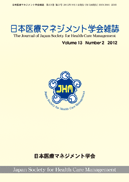Volume 16, Issue 3
Displaying 1-8 of 8 articles from this issue
- |<
- <
- 1
- >
- >|
Original Articles
-
Article type: Original Articles
2015Volume 16Issue 3 Pages 122-126
Published: December 01, 2015
Released on J-STAGE: November 18, 2021
Download PDF (716K)
Case Reports
-
Article type: Case Reports
2015Volume 16Issue 3 Pages 127-133
Published: December 01, 2015
Released on J-STAGE: November 18, 2021
Download PDF (1509K) -
Article type: Case Reports
2015Volume 16Issue 3 Pages 134-140
Published: December 01, 2015
Released on J-STAGE: November 18, 2021
Download PDF (3545K) -
Article type: Case Reports
2015Volume 16Issue 3 Pages 141-146
Published: December 01, 2015
Released on J-STAGE: November 18, 2021
Download PDF (1248K) -
Article type: Case Reports
2015Volume 16Issue 3 Pages 147-151
Published: December 01, 2015
Released on J-STAGE: November 18, 2021
Download PDF (641K) -
Article type: Case Reports
2015Volume 16Issue 3 Pages 152-157
Published: December 01, 2015
Released on J-STAGE: November 18, 2021
Download PDF (1933K) -
Article type: Case Reports
2015Volume 16Issue 3 Pages 158-162
Published: December 01, 2015
Released on J-STAGE: November 18, 2021
Download PDF (546K) -
Article type: Case Reports
2015Volume 16Issue 3 Pages 163-168
Published: December 01, 2015
Released on J-STAGE: November 18, 2021
Download PDF (1554K)
- |<
- <
- 1
- >
- >|
